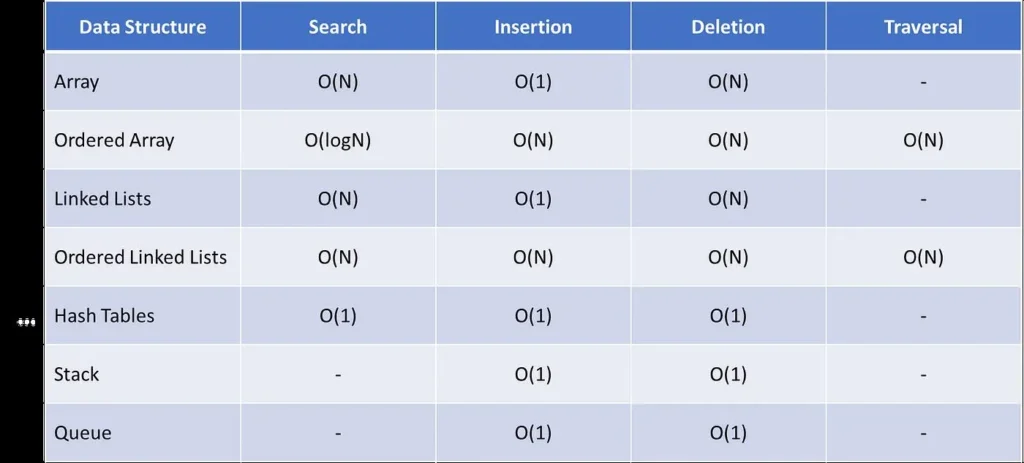Java Data Structures: A Comprehensive Overview
Java provides a rich set of data structures as part of its Collections Framework, enabling efficient data management and manipulation. These structures are fundamental to Java programming and offer various ways to store, access, and organize data. Understanding these data structures is crucial for writing efficient and effective Java code. Let’s explore some of Java’s most commonly used data structures, their characteristics, and how they can be implemented.

One of the most versatile and widely used data structures in Java is the ArrayList. It’s a dynamic array implementation that can grow or shrink in size as needed, making it ideal for situations where the size of the data set may change. ArrayList allows for fast random access to elements and efficiently adds elements at the end of the list. However, inserting or removing elements from the middle can be slower as it requires shifting other elements.
| Operation | Time Complexity |
| Access | O(1) |
| Search | O(n) |
| Insertion (at end) | O(1) amortized |
| Deletion (from end) | O(1) |
| Insertion (at middle) | O(n) |
| Deletion (from middle) | O(n) |
Here’s a practical example of using an ArrayList in Java:
“`java\nimport java.util.ArrayList;\n\nclass Main {\n public static void main(String[] args) {\n ArrayList<String> languages = new ArrayList<>();\n languages.add(\”Java\”);\n languages.add(\”Python\”);\n languages.add(\”Swift\”);\n System.out.println(\”ArrayList: \” + languages);\n // Output: ArrayList: [Java, Python, Swift]\n }\n}\n“
Another crucial data structure in Java is the HashMap, which implements the Map interface using a hash table. HashMaps are excellent for storing key-value pairs and provide constant-time performance for basic operations like adding or retrieving elements. They use a hashing mechanism to determine the storage location for elements, allowing for efficient data retrieval based on unique keys.
Here’s an example of how to use a HashMap in Java.
“`java\nimport java.util.HashMap;\n\npublic class Example {\n public static void main(String[] args) {\n HashMap<String, Integer> grades = new HashMap<>();\n grades.put(\”Gary\”, 40);\n grades.put(\”Susan\”, 94);\n System.out.println(\”Gary’s grade: \” + grades.get(\”Gary\”)); // Output: 40\n grades.put(\”Gary\”, 50); // Updating a value\n System.out.println(\”Gary’s updated grade: \” + grades.get(\”Gary\”)); // Output: 50\n }\n}\n“
Other important data structures in Java include LinkedList (efficient for adding and removing elements in the middle), Stack (Last-In-First-Out), Queue (First-In-First-Out), HashSet (for storing unique elements), and TreeSet (for storing unique elements in a sorted order). Each of these structures has its strengths and is suited for different use cases, allowing developers to choose the most appropriate one based on their specific requirements.










